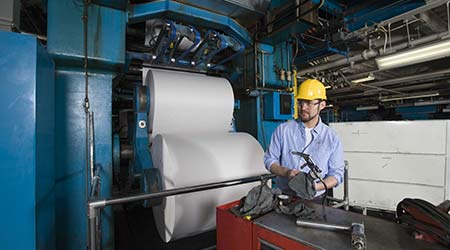Improving Long-Term Energy Efficiency with Commissioning
Most facility condition assessments don’t include an energy efficient component. They should! Here’s how to use commissioning and testing and balancing to improve FCAs.
By Josh Green and Chris Smith
The challenges of facility management and ownership are just beginning when a facility is built and turned over for operations. Throughout the life of the facility, it is not unusual for more than two-thirds of the overall cost of a facility to be embodied in the operations & maintenance costs. Energy is usually a large component of these costs. Additionally, many facilities experience changes in operational profiles through updates to uses, requirements for renovations, evolving technologies, and renewed focus on energy and sustainability. To address and understand the condition and operation of their facilities, owners often turn to consultants to perform a facility condition assessment (FCA). To maximize the potential for owners to receive the largest benefit for their facilities, the scope of services for facility condition assessment should be expanded to incorporate energy, commissioning (Cx), and test & balance (TAB) perspectives.
A facility condition assessment (FCA) is usually focused on a static review of the condition of the facility and individual components in terms of age, design, construction, methods, and materials. An FCA will obtain building data including deferred maintenance and deficiencies and engage the facility operations staff for input. All systems including the building envelope are usually considered and the current condition of assets are identified. The results from the FCA will provide asset classification and remaining life estimates supporting deferred maintenance planning and replacement information based on “like-for-like” which support continued facility operations. An FCA is based on a static physical analysis and provides limited performance data and does not address the operational performance or energy performance of the facility systems.
When owners look at costs of operations, energy is often considered a top concern. Many owners are likely familiar with energy audits. An energy audit is focused on performing an inspection survey along with an analysis of energy flows for energy conservation and cost management. An energy audit will usually focus on benchmarking the facility in comparison to other facilities of the same type and reducing the amount of energy input while still achieving the same facility purpose and output. The level of scope of the energy audit, and the depth of study for a facility is based on the level of audit selected. ASHRAE guidelines provide scope of work levels that can help a facility manager determine the level of study needed for their purposes. This process is still a relatively static review of systems and operations with limited focus on existing conditions which does not address the full performance of systems.
To obtain a more dynamic perspective of the systems involved in a facility, a study would need to include opportunities to view and analyze the system performance through the entire expected range of operations. Commissioning is a quality assurance process for achieving, verifying and documenting that the performance of facility systems and assemblies meet the defined objectives and criteria for the project. Engaging commissioning services can support a more wholistic review of the facility that will include analysis of performance of the facility systems in relation to the actual intended operations. The scope of activities for existing building commissioning also includes many of the activities that are typically expected for more detailed energy audits. Facility improvement measures will be identified and performance of the facility systems in relation to their intended operations will be the focus. Existing building commissioning seeks to have the facility operate efficiently and in the manner the owner intended.
Through broadening the team for an enhanced FCA, a TAB professional brings valuable experience in evaluating the condition of HVAC systems. By coupling accurate performance test data with the knowledge of optimum system performance, the report and analysis can assist key stakeholders in determining the current condition of assets such as life expectancy of equipment and potential code deficiencies. Multiple facility assessment objectives can be accomplished using the TAB process, such as troubleshooting system performance, energy use trending, accurate measurement and verification of all types of systems. These systems include life safety systems, and recently, Covid-19 assessments where indoor air quality and ventilation rates are measured and adjusted. As a stand-alone process, and in addition to the key performance test data, TAB can also be interfaced with the facility’s building automation system to evaluate the performance of the building automation controls, sequence of operation, and controlled devices.
In order to perform a facility condition assessment using the TAB process there are steps that must be taken to ensure the desired outcome — documentation of accurate test results and system performance analysis. First, the scope of work must be acquired with the systems that require testing. Whether it’s thermal comfort, operational issues or energy concerns that drive the testing scope, a specific system or group of systems (and potentially sub-systems) must be identified. Next, the design airflow and water flow quantities should be researched and documented. Then, planning and taking measurements to obtain actual performance data is accomplished so that an accurate conditions assessment report can be submitted.
Specific modes of operation such as full cooling, full heating, and economizers should be utilized for testing. This allows for the evaluation of sub-systems such as, pumping and central energy plant distribution, as well as the building pressure controls analysis — all of which should be included in the final report. System deficiencies, operational issues and abnormalities should be well documented and recorded. This is where an experienced field technician is valuable in identifying anything out of the ordinary.
An enhanced FCA process that engages a traditional assessment along with aspects of energy, commissioning and TAB for existing facilities will provide a full picture of the facility and operations to the owner. In addition to the asset classification and remaining life, this fully integrated approach will provide the owner with accurate TAB data as well as quality verification and adjustments to the systems to match the intended operations. Energy analytics, including the identification of energy conservation measures and operational and facility modifications through facility improvement measures would also be identified through this process. Enhanced FCA commissioning process deliverables include defining the current facility requirements, uncovering and addressing operational deficiencies, and recommendations for utility and carbon footprint reduction, as well as maintenance program improvements.
The benefits of the enhanced FCA process will provide owners with the ability to improve from a reactive to a proactive, data-driven approach that enables an informed investment and operational strategy. The information generated is available for the owner to assist in prioritizing budgets for capital improvements and equipment upgrades, as well as operation and maintenance program improvements. The enhanced FCA process will support sustainability and decarbonization goals through reducing energy requirements, associated costs and increased service of systems. Review of options for improvements in systems go beyond a “like-for-like” replacement strategy when considering the benefits through energy savings and operational improvements. This process not only pays for itself through improved operations and energy efficiency but will also benefit occupants through improved system performance, updating and repurposing systems to provide better IAQ and arming the operational staff with fundamental knowledge of system operations. Resiliency of the facility will benefit through the informed operations and maintenance strategies while mitigating disruptions and maintaining seamless operation, including critical facilities.
Utilizing an experienced team that includes energy, commissioning and TAB professionals (in addition to the facility condition assessment team) will inform the owner of the benefits of optimizing building performance. The enhanced FCA team will bring expertise and experience in system start-up, check-out, testing and balancing strategies, functional performance testing and energy conserving control strategies that will support the broader understanding of the facility condition and performance. In turn this will create the opportunity for persistent savings and operational improvements that would not be seen with only a static facility condition assessment. Bringing together the perspectives of energy, commissioning and TAB through the enhanced FCA will support a drive to maximize total cost of ownership for facilities and will provide a roadmap for owners to create sustainable, high performing buildings.
Josh Green, TBE is an Associated Air Balance Council (AABC) Board Member and a vice president with Environmental Test & Balance, Co.
Chris Smith, CxA, EMP, is Energy Management Association Board President, AABC Commissioning Group member, and project manager with Jacobs Engineering.
This article is an extension of a November 2021 APPA Webinar presented by Green and Smith.
Related Topics:












